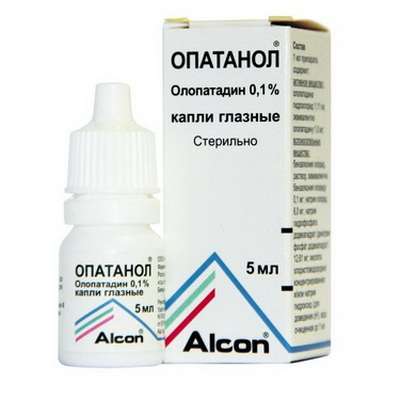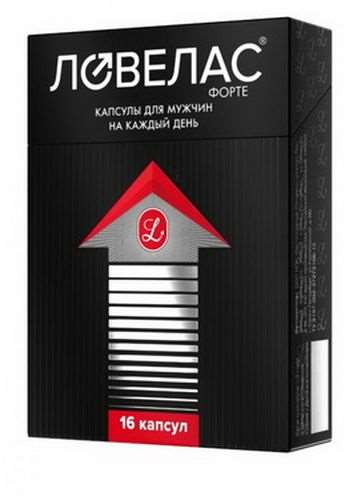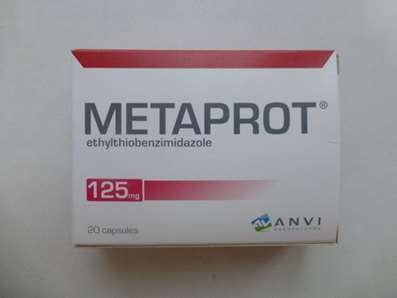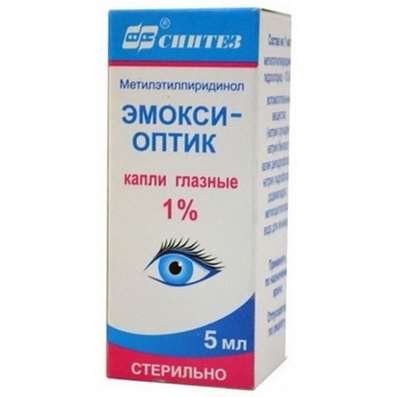Instruction for use: Esmya
I want this, give me price
Active substance Ulipristal
ATX code G03XB02 Ulipristal
Pharmacological groups
Estrogens, gestagens; Their homologues and antagonists
Nosological classification (ICD-10)
D25 Leiomyoma of the uterus
Fibroids of the uterus
Composition
Tablets 1 table.
active substance:
Whipped the acetate 5 mg
Auxiliary substances: MCC (microcrystalline cellulose) - 93.5 mg; Mannitol - 43.5 mg; Talcum - 4 mg; Croscarmellose sodium - 2.5 mg; Magnesium stearate 1.5 mg
Description of dosage form
Round biconvex tablets white or almost white with engraved "ES5" on one side.
pharmachologic effect
Pharmacological action is anti-gestagenic.
Pharmacodynamics
Ulipristal is an active selective synthetic modulator of progesterone receptors, which is characterized by a tissue-specific partial antiprogestronic effect.
Endometrium. Ulipristal has a direct effect on the endometrium. At the beginning of daily intake of the drug at a dose of 5 mg during the menstrual cycle in most women (including patients with fibroids) another menstrual bleeding ends, and the next does not occur. When the drug is stopped, the menstrual cycle usually resumes within 4 weeks. The direct action on the endometrium results in specific for this class of drugs to changes in the endometrium, associated with an antagonistic effect on the progesterone receptors (Progesterone Receptor Modulator Associated Endometrial Changes (PAEC). In general, histological changes are presented inactive and weakly proliferating epithelium and accompanied asymmetry stromal growth and epithelium, severe cystic glands extension mixed estrogenic (mitotic) and progestagenic (secretory) effects on epithelia. Such changes were observed Est 60% of patients receiving ulipristal within 3 months. These changes are reversible and disappear after cessation of treatment, they should not be mistaken for endometrial hyperplasia.
Approximately 5% of patients of reproductive age with severe forms of menstrual bleeding have an endometrium thickness of more than 16 mm. In 10-15% of patients receiving ulcers, the endometrium can thicken (> 16 mm) during treatment. This thickening disappears after discontinuation of the drug and the resumption of menstrual bleeding. If the thickening of the endometrium persists for 3 months after the end of treatment and recovery of the menstrual cycle, an additional examination should be conducted to exclude other diseases.
Leiomyoma. Ulipristal has a direct effect on leiomyomas, suppressing cell proliferation and inducing apoptosis, which leads to a decrease in their size.
Pituitary. With the daily administration of vipers in a dose of 5 mg, ovulation is suppressed in most patients, as indicated by the maintenance of a progesterone concentration of about 0.3 ng / ml.
With a daily intake ulipristala 5 mg partially reduced FSH concentration, however estradiol plasma concentration is maintained in most patients at mid follicular phase, and corresponds to that in the placebo group.
Ulipristal does not affect the concentration of thyroxin-binding globulin, ACTH, and prolactin in the blood plasma for 3 months of treatment.
Preclinical safety data. Pre-clinical studies of pharmacological safety, toxicity of multiple doses and genotoxicity of potential threats to humans have not been revealed. Key findings in the research associated with the systemic toxicity influence on the progesterone receptors (as well as receptors on RGCs when using the drug in higher concentrations) with anti-progesterone activity at exposures similar to therapeutic in humans. In a 39-week study in monkeys using low doses, changes similar to PACE were found. In connection with its mechanism of action, vulture causes fetal death in rats, rabbits (at multiple doses above 1 mg / kg), guinea pigs and monkeys. The safety of the drug against the human embryo is not established. In doses small enough to preserve pregnancy in animals, teratogenic potential is not revealed. In reproduction studies in rats using dosages that provide the same exposure as in man, revealed no evidence of an effect on reproductive performance of animals receiving ulipristal, as well as their progeny. Carcinogenicity studies have not been conducted.
Clinical efficacy and safety. Efficacy ulipristala fixed doses of 5 and 10 mg 1 time per day was evaluated in 2 phase III trials, which involved a patient with a very heavy menstrual bleeding caused by uterine myoma. In comparison with placebo, a clinically significant decrease in the amount of menstrual blood loss was found in patients taking ulcers. This allowed faster and more effective correction of anemia than with the appointment of only iron preparations. Reduction of menstrual blood loss in patients receiving ulipristal was comparable to the group receiving GnRH agonist (gonadotropin releasing hormone) (leuprorelin). In the majority of patients who received vomit, the bleeding stopped during the first week of admission (amenorrhea developed). According to MRI (magnetic resonance imaging), patients receiving ulcers had a significantly larger decrease in uterine fibroids than in the placebo group. Patients who have not been performed a hysterectomy or myomectomy, ultrasonography (ultrasound) control at the end of the treatment (13th week) was estimated decrease in the size of uterine fibroids. As a rule, it persisted for 25 weeks of follow-up in patients receiving ulcers, whereas in the group receiving leuprorelin, there was a slight increase in the size of uterine fibroids.
In a further Phase III study, in which patients received 2 cycles of 10 mg of vaginoplasty for 3 months, the incidence of amenorrhea was comparable at the end of both courses of therapy. The decrease in the volume of leiomyoma registered during the first course was preserved during the 2nd course.
Taking into account the results of previous studies, the effectiveness of the drug at a dose of 5 mg during the first course of therapy will be the same during the second course of therapy, similarly to a dose of 10 mg.
Despite the limited number of patients completing four 3-month courses of treatment, the safety data obtained are sufficient to justify one additional 3-month course of therapy in the preoperative period.
Pharmacokinetics
Suction. After a single oral dose of 5 or 10 mg, vulture is quickly absorbed, reaching about 1 hour after taking its Cmax (23.5 ± 14.2) and (50 ± 34.4) ng / ml, respectively. AUC (the area under the concentration-time curve) 0-∞ is (61.3 ± 31.7) and (134, ± 83.8) ng · h / ml, respectively. Ulipristal rapidly transformed into a pharmacologically active metabolite, with 1 hour after receiving of Cmax (9 ± 4,4) and (20,6 ± 10,9) ng / ml, AUC0-∞ - (26 ± 12) and (63 , 6 ± 30.1) ng · h / ml, respectively. Receiving ulipristala 30 mg with breakfast with high fat reduces the average Cmax approximately 45% increase in median Tmax of 0.75 hours to 3 hours and a 25% increase of AUC0-∞, as compared with the fasted. The same results were obtained for the active mono-N-demethylated metabolite. This kinetic effect of food is not regarded as significant for daily intake of pills.
Distribution. Ulipristal highly (> 98%) binds to plasma proteins, including albumin, α1-acid glycoprotein, HDL (high density lipoproteins) and LDL (low density lipoproteins).
Metabolism. Ulipristal is rapidly converted to mono-N-demethylated and then to di-N-demethylated metabolites. In vitro data show that this process occurs in the cytochrome P450 system with the participation of the 3A4 isoenzyme (CYP3A4 (cytochrome P450 isoenzyme)). Proceeding from the fact that the metabolism of vypristopitala is mediated by cytochrome P450, it is expected that hepatic insufficiency will affect the excretion of vigilance, which will lead to an increase in its effect.
Excretion. The main way of excretion is through the intestine, less than 10% of the substance is excreted by the kidneys. The final T1 / 2 vigil after a single intake of 5 or 10 mg is approximately 38 hours, the average clearance is about 100 l / h. In vitro data indicate that clinically significant concentrations ulipristal and its active metabolite do not inhibit isozymes CYP1A2 (cytochrome P450), 2A6, 2C9, 2C19, 2D6, 2E1 and 3A4 isoenzyme and do not induce CYP1A2 (cytochrome P450). Thus, the use of vandalism should not affect the clearance of drugs that are metabolized with the participation of these isoenzymes. The in vitro data show that the overgrowth and its active metabolite are not substrates of P-glycoprotein (P-gp).
Indications
Preoperative therapy of moderate and severe symptoms of uterine fibroids in adult women of reproductive age is over 18 years. Duration of therapy - no more than 2 courses.
Contraindications
Hypersensitivity to vandalitis or any of the excipients;
Pregnancy and the period of breastfeeding;
Bleeding from the vagina of an unclear etiology or for reasons not related to uterine myoma;
Cancer of the uterus, cervix, ovary or breast;
Duration of therapy more than 2 courses;
Bronchial asthma (severe form, not amenable to oral glucocorticosteroids (glucocorticosteroids));
Age younger than 18 years.
With caution: renal and / or hepatic impairment; bronchial asthma.
pregnancy and lactation
Ulimprust is contraindicated in pregnancy. Data on the use of overpriced in pregnant women are absent or limited. Despite the fact that no teratogenic potential has been identified in animal studies, data on reproductive toxicity are not enough.
In animal studies, it has been shown that vilified milk permeates into breast milk. It is not known whether vilified milk permeates into the human breast milk, therefore, the risk for children during breastfeeding can not be ruled out. Ulipristal is contraindicated during breastfeeding.
Side effects
Security Profile Overview
Safety was assessed in 602 women with uterine fibroids who received 5 or 10 mg of vagrancy during the Phase III trials. The most frequent observed phenomenon in clinical trials was amenorrhea (80.8%), which is considered the desired outcome.
The most frequent adverse reaction was the appearance of tides. The vast majority of adverse reactions were mild or moderate (93.6%), did not lead to discontinuation of drug treatment (99.5%) and were resolved independently.
The safety of two courses of treatment with 10 mg of vipostage, each lasting 3 months, was evaluated in a phase III study involving women with uterine fibroids. The data obtained are comparable with the safety profile in the course of treatment within a single course.
List of adverse reactions
In 3 Phase III studies, the following adverse reactions were reported in patients with uterine myomas who received the drug for 3 months. Adverse adverse reactions are presented according to the system-organ classes according to the MedDRA classification and with the frequency of occurrence: very often (≥1 / 10); Often (from ≥1 / 100 to <1/10); Infrequently (from ≥1 / 1000 to <1/100); Rarely (from ≥1 / 10000 to <1/1000); Very rarely (<1/10000); Unknown (can not be estimated based on available data).
Within each frequency group, adverse reactions are presented in descending order of severity.
Mental disorders: often - anxiety, emotional disorders.
From the nervous system: often - headache *; Infrequently - dizziness.
From the side of metabolism and nutrition: infrequently - an increase in body weight.
From the side of the hearing organ and labyrinthine disturbances: often - vertigo.
From the respiratory system, chest and mediastinum: infrequently - epistaxis.
From the digestive tract: often - pain in the abdomen, nausea; Infrequently - dyspepsia, dry mouth, flatulence, constipation.
From the skin and subcutaneous tissues: often - acne, increased sweating; Infrequently - alopecia, dry skin.
From the musculoskeletal system and connective tissue: often - pain in the bones and muscles; Infrequently - back pain.
From the side of the kidneys and urinary tracts: infrequently - urinary incontinence.
From the genitals and the breast: very often - amenorrhea, thickening of the endometrium *; Often - hot flashes *, pelvic pain, ovarian cyst *, tension / tenderness of the mammary glands; Infrequently - metrorrhagia, rupture of the ovarian cyst, vaginal discharge, an increase and discomfort in the mammary glands.
* See "Description of selected adverse reactions".
General disorders and disorders at the injection site: often - swelling, fatigue; Infrequently, asthenia.
Changes in laboratory and instrumental studies: often - increasing the concentration of cholesterol in the blood; Infrequently, an increase in the concentration of triglycerides in the blood.
Description of individual adverse reactions
Thickening of the endometrium. In 10-15% of patients who received ulcers, an endometrial thickening (> 16 mm, according to ultrasound or MRI at the end of treatment) may occur. This phenomenon is reversible after cessation of treatment and the resumption of the menstrual cycle. In addition, reversible changes in the endometrium, referred to as PACE, differ from endometrial hyperplasia. The pathologist should be informed of the patient's admission during a histological examination with a hysterectomy or endometrial biopsy.
Tides. They were noted in 9.8% of patients, but their frequency varied in different studies. In a study with active control, their incidence was 24% (10.5% moderate or severe) for receiving vulture and 60.4% (39.6% moderate or severe) for receiving leuprorelin. In a placebo-controlled study, the frequency of hot flashes was 1% for vandal and 0% for placebo.
Headache. An easy or moderate degree was noted in 6.8% of patients.
Ovarian cyst. In 1.2% of patients, functional ovarian cysts were found during treatment, which spontaneously disappeared within a few weeks.
Uterine bleeding. Patients with severe menstrual bleeding due to uterine leiomyoma are at increased risk of blood loss, which may require surgical intervention. There have been several such reports both during therapy and 2-3 months after the end of treatment with ulcers.
Interaction
The possible effect of other drugs on the action of whip
Hormonal contraceptives. Ulipristal has a steroid structure and acts as a selective modulator of progesterone receptors with a predominant inhibitory effect on the receptors of progesterone. Thus, hormonal contraceptives and gestagens can reduce the effectiveness of vandalitis by competing with the progesterone receptor. Therefore, simultaneous use of preparations containing gestagens is not recommended.
Inhibitors of the isoenzyme CYP3A4. After applying moderate inhibitor of isozyme CYP3A4 - erythromycin propionate (500 mg, 2 times a day for 9 days) - in healthy female volunteers Cmax and AUC figures ulipristala raised to 1.2 and 2.9 times, respectively; The AUC value of the active metabolite increased 1.5 times, while the Cmax of the active metabolite decreased (by 0.52 times).
Against the background of ketoconazole (400 mg 1 time per day, 7 days), a potent inhibitor of CYP3A4, in healthy female volunteers Cmax and AUC figures ulipristala raised to 2 and 5.9 times respectively. There was an increase in the AUC for the active metabolite, which exceeded 2.4 times with a decrease in its Cmax (a change of 0.53 times).
Correction of the dose with the use of ulcers in patients receiving weak inhibitors of the isoenzyme CYP3A4 is not required. The combined use of moderate and potent inhibitors of the isoenzyme CYP3A4 with ulricide e is recommended.
Inductors of the isoenzyme CYP3A4. Against the background of a strong inducer of CYP3A4 Rifampicin (300 mg, 2 times a day, 9 days) in healthy female volunteers noted marked reduction in Cmax and AUC parameters ulipristala and its active metabolite more than 90%. Also, there was a decrease in T1 / 2 whitened 2.2 times, which corresponds to a decrease in its exposure by about 10 times. Concomitant use ulipristala and powerful inducers of CYP3A4 (for example, rifampicin, rifabutin, carbamazepine, oxcarbazepine, phenytoin, fosphenytoin, phenobarbital, primidone, Hypericum perforatum, efavirenz, nevirapine, ritonavir, - long-term use on the background) are not recommended.
Drugs affecting the pH of gastric juice. Application ulipristala (10 mg / day) together with an inhibitor of proton pump - esomeprazole (20 mg 1 time per day for 6 days) - reduces the average Cmax by 65% elongation Tmax (median of 0.75 hours to 1 hour) And an average AUC increase of 13%. This effect of drugs that increase the pH of gastric juice, is not considered clinically significant for the daily intake of pills vyskopstala.
The possible influence of illicit influence on the effect of other drugs
Hormonal contraceptives. Ulipristal can interfere with the action of hormonal contraceptives (gestagen-containing tablets, gestagen-releasing systems or combined oral contraceptives) and progestogen medications used for other indications. Therefore, the concomitant use of medications containing gestagen is not recommended. Gestagen-containing preparations should not be used within 12 days after the cessation of treatment by ulpristalom.
Substrates P-gp. In vitro data show that in clinically significant concentrations of ulcers during suction in the wall, the gastrointestinal tract may be an inhibitor of P-gp. Simultaneous use of the substratum and P-gp substrate has not been investigated, therefore the probability of interactions can not be ruled out. In vivo data indicate that the reception ulipristala (tablet 10 mg) for 1.5 hours prior to receiving the P-gp substrate fexofenadine (60 mg) was no clinically significant effect on the pharmacokinetics of fexofenadine. Thus, it is recommended to observe an interval of at least 1.5 h between taking vaginal and P-gp substrates (eg dabigatran etexilate, digoxin, fexofenadine). The patient should inform the attending physician about all medications that she takes, even if they are dispensed without a prescription.
Dosing and Administration
Inside, 1 tab. 1 time a day, regardless of food intake, for no more than 3 months.
One-time repeated carrying out of a 3-month course of therapy is allowed. Repeated course of therapy should be started no earlier than the 2nd menstrual cycle after the end of the 1st course, during the first week.
There is no data on the safety of long-term courses of therapy, so the duration of treatment should not exceed two courses lasting 3 months.
If you miss a pill, you should take the Esmya® tablet as soon as possible. If the reception is missed for more than 12 hours, then the missed tablet is not accepted, and you should just resume the normal reception mode.
Special groups of patients
Renal insufficiency. In patients with mild or moderate renal failure, dose adjustment is not required. The drug Esmya® is not recommended for use in patients with severe renal failure if it is not possible to continuously monitor (see "Special instructions").
Liver failure. In patients with mild hepatic insufficiency, dose adjustment is not required. The drug Esmya® is not recommended for use in patients with moderate or severe liver failure if it is not possible to continuously monitor (see "Special instructions").
Children. The use of the drug Esmya® according to the corresponding indications in children is not provided. The safety and efficacy of vandalitis are established only for women 18 years of age and older.
Overdose
Data on overdose of overdue is limited.
Single doses up to 200 mg and daily doses of 50 mg for 10 days were administered to a limited number of volunteers, without serious or serious adverse reactions.
special instructions
Ulipristal is prescribed only after a thorough examination. Pregnancy should be excluded before treatment begins.
Contraception. Due to the possibility of unwanted interactions, the concomitant use of only gestagen-containing drugs, gestagen-releasing systems or combined oral contraceptives is not recommended. Although the majority of women who received therapeutic doses were exposed to anovulation, an additional use of non-hormonal method of contraception during treatment was recommended.
Renal insufficiency. There is no reason to assume that renal insufficiency can significantly affect the excretion of ulcers. It is not recommended to use ulpristal without constant observation in patients with severe renal insufficiency. Special studies have not been conducted.
Liver failure. There is no experience of therapeutic use of ulcers in patients with hepatic insufficiency. It is expected that liver failure may affect the excretion of ulcers, which will lead to an increase in the effect of the drug. This is not relevant for patients with mild liver failure. It is not recommended to appoint ulcers to patients with moderate or severe hepatic impairment when it is not possible to continuously monitor.
Concomitant therapy. It is not recommended concomitant use of vandal and CYP3A4 inhibitors of medium power (eg erythromycin, grapefruit juice, verapamil) or potent inhibitors (eg ketoconazole, ritonavir, nefazodone, itraconazole, telithromycin, clarithromycin).
It is not recommended to use the combined use of vandal and powerful inducers CYP3A4 (for example rifampicin, rifabutin, carbamazepine, oxcarbazepine, phenytoin, phosphenytoin, phenobarbital, primidon, St. John's wort, efavirenz, nevirapine, ritonavir - against long-term use).
Changes in the endometrium. Ulipristal has a specific pharmacodynamic effect on the endometrium. An increase in the thickness of the endometrium may be noted. If the thickening of the endometrium persists for 3 months after the end of treatment and the resumption of the menstrual cycle, an additional examination should be conducted to exclude other diseases. In patients receiving ulcers, histological examination may show changes in the structure of the endometrium. Such changes are reversible after the completion of treatment. These histological changes are referred to as endometrial changes associated with the antagonistic effect on PACE, and they should not be erroneously evaluated as endometrial hyperplasia. It is recommended to conduct no more than 2 courses of therapy. The duration of each course should not exceed 3 months, since the risk of undesirable effects on the endometrium against a background of longer therapy is unknown.
Bleeding. Patients should be informed that treatment with ulcers usually results in a significant reduction in menstrual blood loss or amenorrhea during the first 10 days of treatment. With persistent excessive bleeding, the patient should consult a doctor. As a rule, the menstrual cycle resumes within 4 weeks after the end of the course of treatment.
Fertility. Anastilation was observed in the majority of women who took ulcers in therapeutic doses. However, fertility with long-term use of vandalitis has not been studied.
Impact on the ability to drive vehicles and mechanisms. Ulipristal can have minimal impact on the ability to drive vehicles and mechanisms, because After taking vaginal can be observed slight dizziness.
Form of issue
Tablets, 5 mg. According to Table 14. In a blister of PVC / PE / PVDH films of orange color and aluminum foil. For 2 or 6 blisters are placed in a cardboard box.
Terms of leave from pharmacies
On prescription.
storage Conditions
In the dark place at a temperature of no higher than 30 ° C.
Keep out of the reach of children.
Shelf Life
2 years.
Do not use after the expiry date printed on the package.

 Cart
Cart





